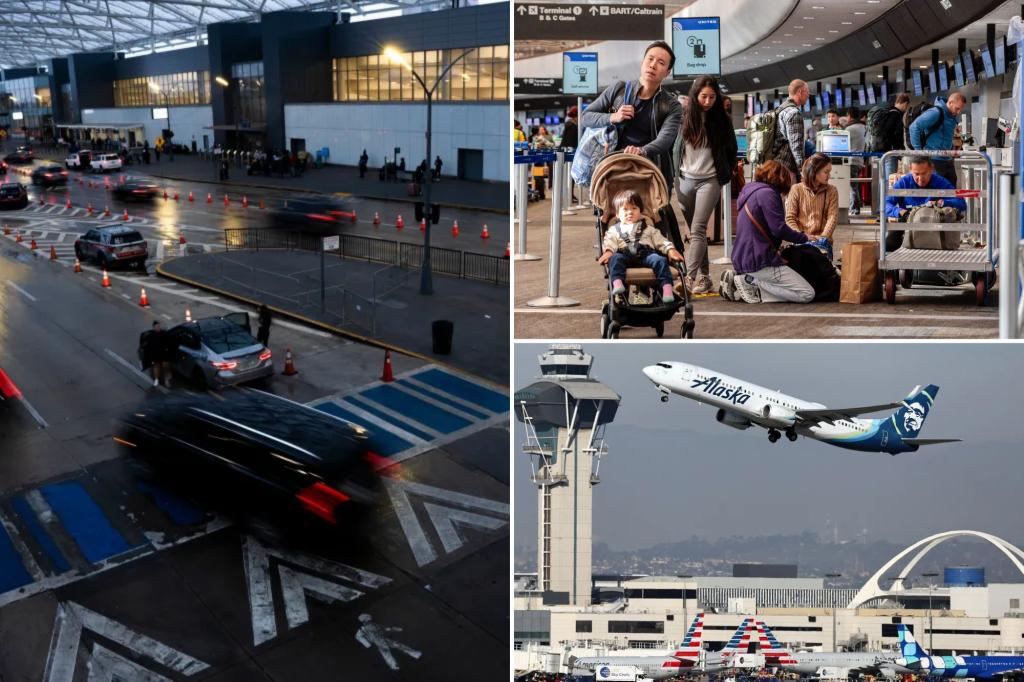A sophisticated, multi-state auto theft ring, comprising at least fourteen individuals, has targeted the Dallas-Fort Worth International Airport (DFW), pilfering an estimated $4.9 million worth of vehicles between 2023 and November 2024. This revelation, brought to light by a search warrant obtained by local news outlets, paints a picture of a highly organized criminal operation exploiting vulnerabilities in airport security. The ring’s modus operandi involves the use of advanced technology to bypass modern car security systems, focusing primarily on high-end muscle cars and luxury SUVs. While DFW Airport authorities acknowledge the issue, they emphasize a significant reduction in car thefts in 2024 compared to the previous year, attributing this success to recent arrests that have disrupted the ring’s activities. They also highlight the relatively low number of thefts compared to the vast number of vehicles parked at the airport annually.
The alleged ringleader, Yoel Hernandez-Frometa, 37, is accused of employing “Autel devices,” sophisticated auto diagnostic tools typically used by locksmiths and mechanics, to reprogram key fobs and gain unauthorized access to vehicles. This method, according to security experts, is a common tactic employed by organized car theft rings, allowing them to circumvent modern security measures and steal vehicles based on market demand and resale value. Hernandez-Frometa, along with two other suspects, Jose Alejandro Pavon-Estopian, 30, and Vainer Pinollotoro, 29, were apprehended in Salt Lake City, Utah, in July 2024 on multiple charges, including possession of a stolen vehicle, fleeing from police, and possession of burglary tools. This arrest followed an incident where the suspects were observed scrutinizing vehicles at the Salt Lake City airport, leading to a police pursuit and their eventual capture.
The arrest of the three suspects in Salt Lake City provided critical insights into the inner workings of the theft ring. A search of their belongings revealed a trove of evidence, including blank car key fobs, a laptop, electronic communication hardware, and a key fob programming device. This discovery, according to authorities, substantiated the existence of a coordinated car theft operation extending beyond Texas. Interestingly, the suspects had no apparent ties to Salt Lake City, further suggesting the wide geographical reach of their criminal activities. The Salt Lake City Police Department played a pivotal role in this operation, working in conjunction with other law enforcement agencies to apprehend the suspects and gather crucial evidence. The collaborative efforts highlighted the importance of interagency cooperation in combating organized crime.
Security experts draw parallels between the tactics employed by this organized theft ring and those used by transnational criminal networks and terrorist cells. These groups exploit vulnerabilities, target weak security measures, and capitalize on predictable routines. The theft ring’s structure, characterized by specialized teams responsible for scouting, technical manipulation, transportation, and resale of stolen vehicles, enables them to operate with efficiency and evade detection. This division of labor, combined with their multi-state operations, makes them a particularly challenging target for law enforcement. The lack of resources allocated to complex, multi-jurisdictional investigations further complicates efforts to dismantle these sophisticated criminal enterprises.
The multifaceted nature of this case underscores the need for a coordinated response from law enforcement agencies at all levels. Experts emphasize the importance of collaboration between local, state, and federal authorities to effectively combat these organized theft rings. This collaborative approach allows for the sharing of intelligence, resources, and expertise, enabling law enforcement to connect disparate pieces of information and disrupt the entire network. While acknowledging the complexities of such investigations, they stress the importance of persistent teamwork and resource sharing to weaken these rings and protect the public. The case remains under active investigation, with the FBI’s Dallas Field Office assisting the DFW Airport Police in their ongoing efforts.
The DFW Airport incident serves as a stark reminder of the evolving challenges faced by law enforcement in combating sophisticated criminal enterprises. The use of advanced technology, coupled with organized structures and multi-jurisdictional operations, necessitates a collaborative and proactive approach. By pooling resources, sharing intelligence, and working across jurisdictional boundaries, law enforcement can effectively dismantle these networks and safeguard public safety. The ongoing investigation into the DFW Airport car theft ring will likely reveal further insights into the intricacies of their operations and contribute to developing more effective strategies to combat similar criminal activities in the future.

